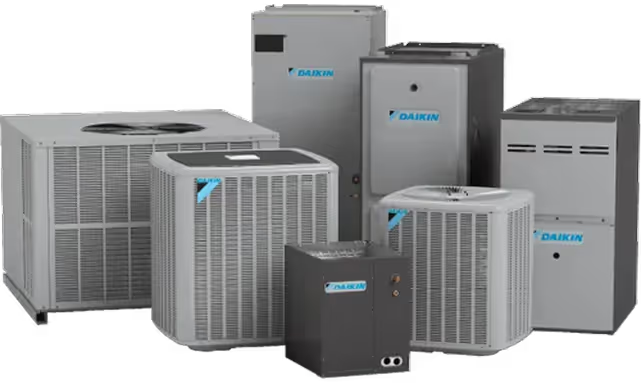Our Services
Get Expert HVAC & Plumbing Installation, Repair, and Maintenance – Fast, Reliable Service You Can Trust!
What to Expect with Cloud Comfort HVAC
At Cloud Comfort HVAC, we prioritize your comfort with expert, eco-friendly HVAC and plumbing services. Whether you're upgrading to a smart home or installing high-efficiency systems, we offer cutting-edge solutions that save energy and reduce your carbon footprint. Our skilled technicians deliver fast, reliable service, ensuring every installation is seamless and efficient.
When you work with us, you can expect clear communication, transparent pricing, and a commitment to quality. With our high Google star rating and dedication to customer satisfaction, we're here to make your home smarter and more comfortable.
35%

.avif)
Customer Testimonials
Hundreds of 5-Star Reviews on Google Show Our Commitment to Customer Satisfaction



Featured Manufacturer
Experience top-tier comfort and efficiency with Daikin’s innovative HVAC systems, expertly installed by Cloud Comfort HVAC.
To provide you with comfort for life which is represented and reinforced in the Daikin Comfort Promise. If, for any reason, our company has not met your expectations within one year of your equipment or system installation, we will return to your house to resolve any issues you have with your installation at no cost to you.
The Daikin Difference is redefining home comfort with some of the most technologically and aesthetically advanced solutions. Our energy-intelligent systems provide an unprecedented level of individual comfort and control. Beyond our products and solutions, our commitment to personal service and manufacturing in North America is what makes us stand out from the pack, leading with air intelligence.
Daikin systems are backed by comprehensive warranties, including a 12-year parts warranty on all products. Select Daikin products, such as furnaces, offer even more coverage, with 12-year unit replacement and lifetime heat exchanger warranties in addition to the standard parts warranty.

Inspections Include
Our Cloud Protection Plans provide you with year-round, worry-free protection. The benefits include:
- Lubricate Motors
- Change Filters, Standard Pleated Filters Included
- Check Evaporator Air Temperatures
- Check Wiring & Connections
- Check Refrigerant Charge
- Check Operating Pressures
- Check Voltage And Amp Draw
- Clean Condensate Line
- Check Performance Of System
- Check Contactor Points
- Check Pressure Switches
- Clean Condenser Coil
- Check Temperature Differential
- Clean Evaporator Coil*
*Evaporator cleaning is included. In the event the coil is plugged and needs to be removed, additional labor will be charged with discount.
- Lubricate Motors
- Adjust Controls If Needed
- Adjust Combustion Air To Burners
- Check Fan Belts
- Change Filters, Standard Pleated Filters Included
- Check Air Temperature Rise
- Check Wiring & Connections
- Clean Burners
- Check For Gas Leaks In Furnace
- Check Heat Exchanger For Cracks
- Check Performance Of System
- Check Heat Strips
- Check Heat Pump In Heating Mode
- Check Heat Pump In Defrost
- Clean Heat Exchanger
Promotions & Specials




New Air Conditoining Unit for as low as $79/mo + Free Wi-Fi Thermostat
(Or As Low As $4,995 as a One-Time Payment)
FINANCE WITH $0 PAYMENTS & 0% INTEREST FOR 12 MONTHS, OAC
Hurry! Offer Ends Soon.








-min.avif)
%20(1).avif)




.avif)

